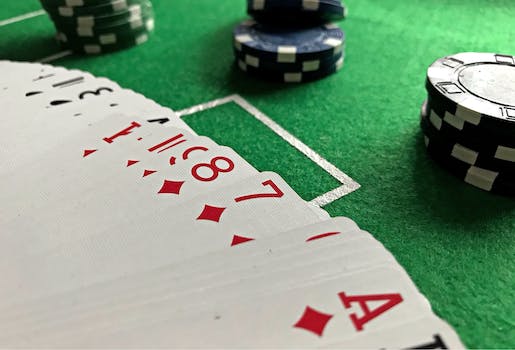The Poker Tournament Playbook: Essential Strategies for Every Player is a comprehensive guide that provides essential strategies and techniques for players participating in poker tournaments. This article offers valuable insights into various aspects of tournament play, including pre-flop and post-flop strategies, hand selection, position play, chip management, and reading opponents. Whether you are a beginner or an experienced player, The Poker Tournament Playbook equips you with the necessary tools to improve your game and increase your chances of success in poker tournaments.
Mastering the Basics: Key Fundamentals for Poker Tournament Success
Mastering the basics is crucial for success in any endeavor, and poker tournaments are no exception. Whether you’re a seasoned player or a novice looking to dip your toes into the world of competitive poker, understanding the key fundamentals is essential.
First and foremost, understanding the rules of the game is paramount. While there are many variations of poker, the most common tournament format is Texas Hold’em. Familiarize yourself with the rules, hand rankings, and betting structure to ensure you’re starting on the right foot.
Once you have a solid grasp of the rules, it’s time to focus on your starting hand selection. In poker tournaments, where the blinds increase over time, conserving your chips is crucial. Playing too many hands can quickly deplete your stack, so it’s important to be selective. Look for strong starting hands like pocket pairs, suited connectors, and high-value face cards, and be prepared to fold weaker hands.
Position is another key factor in poker tournament success. Your position at the table determines the order in which you act, giving you valuable information about your opponents’ hands. In early position, when you’re one of the first to act, it’s best to play cautiously and stick to premium hands. In late position, when you’re one of the last to act, you have more information and can play a wider range of hands.
Managing your stack size is crucial in poker tournaments. Your stack represents your ammunition, and knowing how to use it effectively is essential. In the early stages, when the blinds are low, it’s important to accumulate chips without taking unnecessary risks. As the blinds increase, however, you’ll need to be more aggressive to stay ahead. Look for opportunities to steal blinds and build your stack, but be mindful of your opponents’ tendencies and adjust your strategy accordingly.
Understanding the concept of pot odds is another fundamental skill for poker tournament success. Pot odds refer to the ratio of the current pot size to the cost of a contemplated call. By calculating your pot odds, you can determine whether a particular bet or call is profitable in the long run. If the pot odds are greater than the odds of completing your hand, it may be a wise decision to make the call.
Lastly, mastering the art of reading your opponents is a skill that separates the good players from the great ones. Pay attention to their betting patterns, body language, and verbal cues to gain insight into their hand strength. Look for inconsistencies and exploit them to your advantage. Remember, poker is a game of skill and strategy, and understanding your opponents is a crucial part of the equation.
In conclusion, mastering the basics is essential for success in poker tournaments. Understanding the rules, hand selection, position, stack management, pot odds, and reading your opponents are all key fundamentals that every player should strive to master. By honing these skills, you’ll be well on your way to becoming a formidable force at the poker table. So, study the playbook, practice diligently, and may the cards be ever in your favor.
Advanced Strategies for Reading Opponents and Exploiting Weaknesses
The ability to read opponents and exploit their weaknesses is a crucial skill for any poker player looking to take their game to the next level. In this section of the Poker Tournament Playbook, we will explore some advanced strategies that can help you gain an edge over your opponents.
One of the first things to consider when trying to read your opponents is their betting patterns. Pay close attention to how they bet in different situations. Do they tend to bet aggressively when they have a strong hand? Or do they play more conservatively? By observing these patterns, you can start to get a sense of the strength of their hand.
Another important aspect of reading opponents is their body language. Watch for any subtle cues that may indicate whether they have a strong or weak hand. Are they fidgeting or showing signs of nervousness? Or are they calm and composed? These non-verbal signals can provide valuable insights into their hand strength.
In addition to betting patterns and body language, it’s also important to consider the overall playing style of your opponents. Are they tight and conservative, only playing premium hands? Or are they loose and aggressive, playing a wide range of hands? Understanding their playing style can help you anticipate their moves and adjust your strategy accordingly.
Once you have a good sense of your opponents’ tendencies, it’s time to exploit their weaknesses. One effective strategy is to target players who are playing too many hands. These players are more likely to have weaker hands, so you can take advantage of this by playing more aggressively against them. By putting pressure on them with well-timed bets and raises, you can force them to make mistakes and give up their chips.
Another weakness to exploit is players who are overly cautious. These players are often afraid of taking risks and tend to fold too easily. By bluffing and making aggressive moves, you can push them out of pots and steal their chips. However, it’s important to be selective with your bluffs and choose the right moments to strike. Timing is everything when it comes to bluffing.
In addition to exploiting weaknesses, it’s also important to be aware of your own vulnerabilities. Skilled opponents will be looking for ways to exploit your weaknesses, so it’s crucial to constantly evaluate and adjust your own playing style. Be mindful of any patterns or tells that you may be inadvertently giving away and work on eliminating them from your game.
In conclusion, reading opponents and exploiting their weaknesses is a key component of successful poker play. By paying attention to betting patterns, body language, and playing styles, you can gain valuable insights into your opponents’ hand strength. Once you have this information, you can then exploit their weaknesses by playing more aggressively against loose players and bluffing against overly cautious ones. However, it’s important to be mindful of your own vulnerabilities and constantly work on improving your own game. With these advanced strategies in your arsenal, you’ll be well-equipped to dominate the poker table and increase your chances of success in any tournament.
Navigating Different Stages of a Poker Tournament: Early, Middle, and Late
The early stage of a poker tournament is characterized by deep stacks and a large number of players. During this phase, it is crucial to play cautiously and avoid unnecessary risks. The primary objective is to accumulate chips steadily without jeopardizing your tournament life. Starting hands should be selected carefully, focusing on premium holdings such as pocket pairs and strong suited connectors. Playing aggressively with these hands can help build a solid chip stack early on.
As the tournament progresses into the middle stage, the blinds increase, and the field begins to shrink. At this point, players need to adjust their strategy to account for the changing dynamics. With the blinds becoming more significant, stealing pots becomes a vital tactic. Players should look for opportunities to make well-timed raises and re-raises to pick up uncontested pots. However, it is crucial to be aware of opponents who may be employing the same strategy and adjust accordingly.
In the middle stage, players should also be mindful of their table image. If you have been playing tight and conservative, now might be the time to loosen up and play more aggressively. Conversely, if you have been playing loose and aggressive, it may be wise to tighten up and play more selectively. Adapting to the table dynamics and exploiting your opponents’ tendencies can give you a significant edge in this stage of the tournament.
As the tournament reaches the late stage, the blinds are at their highest, and the remaining players are inching closer to the money. This is where the pressure intensifies, and players need to be prepared to make bold moves. With shorter stacks, players must be willing to take calculated risks to accumulate chips and stay in contention. This is the stage where skilled players can separate themselves from the pack by making well-timed bluffs and strategic all-in moves.
In the late stage, it is crucial to pay close attention to your opponents’ stack sizes and tendencies. Identify the players who are playing conservatively to secure a cash finish and exploit their cautious play by applying pressure. Conversely, be cautious of players who are desperate for chips and may be more willing to take risks. Adjusting your strategy based on the specific dynamics at your table can give you a significant advantage in the late stage of a poker tournament.
In conclusion, navigating the different stages of a poker tournament requires a versatile and adaptable approach. From the early stage, where caution and chip accumulation are key, to the middle stage, where stealing pots and adjusting to table dynamics become crucial, and finally to the late stage, where bold moves and exploiting opponents’ tendencies can make all the difference. By understanding and implementing these essential strategies, every poker player can enhance their chances of success in the thrilling world of tournament poker.
Effective Bankroll Management: Maximizing Your Chances of Long-Term Success
The world of poker tournaments can be both thrilling and challenging. As players compete against each other for the ultimate prize, it’s essential to have a solid strategy in place. One crucial aspect of this strategy is effective bankroll management. By carefully managing your bankroll, you can maximize your chances of long-term success in poker tournaments.
Bankroll management is the practice of allocating and using your poker funds wisely. It involves setting limits on how much you are willing to risk and making strategic decisions about when to play and when to sit out. Without proper bankroll management, even the most skilled players can find themselves in a precarious financial situation.
The first step in effective bankroll management is determining your poker budget. This is the amount of money you are willing to invest in your poker career. It’s important to be realistic and set a budget that you can comfortably afford to lose. Remember, poker is a game of skill, but it also involves an element of luck. Setting a budget that won’t put you in financial jeopardy is crucial for long-term success.
Once you have established your budget, the next step is to divide it into smaller units called buy-ins. A common rule of thumb is to allocate no more than 5% of your total bankroll to a single tournament buy-in. This ensures that even if you experience a string of bad luck, you won’t deplete your entire bankroll in one go. By sticking to this rule, you give yourself a better chance of weathering the ups and downs of tournament play.
In addition to setting buy-in limits, it’s important to have a clear understanding of your risk tolerance. Some players are more comfortable taking bigger risks, while others prefer a more conservative approach. Knowing your risk tolerance will help you make informed decisions about which tournaments to enter and how much to wager. It’s crucial to strike a balance between taking calculated risks and protecting your bankroll.
Another key aspect of effective bankroll management is knowing when to move up or down in stakes. As your skills improve and your bankroll grows, you may be tempted to play in higher-stakes tournaments. While this can be exciting, it’s important to be cautious and not overextend yourself. Moving up in stakes should be a gradual process, and you should only do so when you have a comfortable cushion in your bankroll. Conversely, if you experience a significant downswing, it may be necessary to move down in stakes temporarily to protect your bankroll.
Lastly, it’s crucial to track your results and regularly evaluate your bankroll management strategy. Keep a record of your wins and losses, and analyze your performance over time. This will help you identify any areas for improvement and make necessary adjustments to your strategy. By constantly refining your bankroll management skills, you can increase your chances of long-term success in poker tournaments.
In conclusion, effective bankroll management is a vital component of a successful poker tournament strategy. By setting a realistic budget, dividing it into buy-ins, understanding your risk tolerance, and making informed decisions about moving up or down in stakes, you can maximize your chances of long-term success. Remember, poker is a game of skill and luck, and proper bankroll management is the key to navigating the ups and downs of tournament play. So, take the time to develop and implement a solid bankroll management strategy, and watch your poker career flourish.
Mental Game Mastery: Developing the Right Mindset for Poker Tournaments
The game of poker is not just about the cards you hold or the bets you make. It is a battle of wits, a psychological game where your mindset can make all the difference. In poker tournaments, where the stakes are high and the competition is fierce, having the right mental game is essential for success. In this section, we will explore some essential strategies to develop the right mindset for poker tournaments.
One of the first things to understand is that poker tournaments can be mentally exhausting. They can last for hours, even days, and require intense focus and concentration. To stay sharp throughout the tournament, it is important to take care of your mental and physical well-being. Getting enough sleep, eating well, and staying hydrated are all crucial for maintaining mental clarity and stamina.
Another key aspect of the mental game in poker tournaments is managing your emotions. It is natural to experience a range of emotions during a tournament, from excitement and confidence to frustration and disappointment. However, it is important not to let these emotions cloud your judgment or affect your decision-making. Developing emotional resilience and the ability to stay calm under pressure is essential for success in poker tournaments.
One effective strategy for managing emotions is to practice mindfulness. Mindfulness involves being fully present in the moment and observing your thoughts and emotions without judgment. By practicing mindfulness, you can become more aware of your emotional state and learn to detach yourself from negative emotions that can hinder your performance. Taking a few moments to breathe deeply and refocus your mind can make a world of difference in your decision-making at the poker table.
In addition to managing emotions, it is also important to develop a strong mental game by cultivating a positive mindset. Believing in yourself and your abilities is crucial for success in poker tournaments. Confidence can help you make bold moves and take calculated risks that can lead to big wins. On the other hand, self-doubt and negative self-talk can undermine your performance and lead to poor decision-making.
To develop a positive mindset, it can be helpful to set goals for yourself and focus on the process rather than the outcome. Instead of fixating on winning the tournament, focus on making the best decisions possible and playing your best game. Celebrate small victories along the way, such as successfully executing a bluff or making a difficult fold. By focusing on the process and acknowledging your achievements, you can build confidence and maintain a positive mindset throughout the tournament.
Lastly, it is important to stay mentally flexible and adaptable in poker tournaments. The game is constantly evolving, and what worked in one hand may not work in the next. Being able to adjust your strategy and adapt to changing circumstances is crucial for success. This requires being open-minded, willing to learn from your mistakes, and constantly seeking to improve your game.
In conclusion, developing the right mindset is essential for success in poker tournaments. Taking care of your mental and physical well-being, managing your emotions, cultivating a positive mindset, and staying mentally flexible are all key strategies to master the mental game of poker. By developing these skills, you can enhance your performance, make better decisions, and improve your chances of winning in poker tournaments. “The Poker Tournament Playbook: Essential Strategies for Every Player” is a comprehensive guide that provides essential strategies for players participating in poker tournaments. It offers valuable insights and techniques to improve one’s gameplay, including tips on hand selection, position play, and reading opponents. With its practical advice and expert analysis, this playbook serves as a valuable resource for both novice and experienced poker players looking to enhance their tournament performance.




